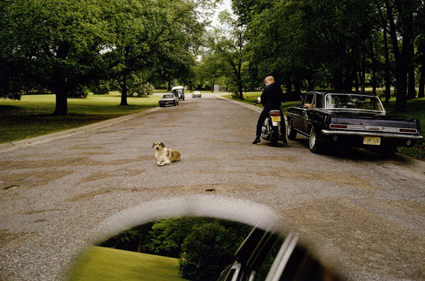WILLIAM EGGLESTON
2013-08-19Eggleston began to experiment with colour in the 1960s. At that time, colour photography was principally associated with commercial industries such as advertising, and was considered unsuitable for fine art photography. In 1972 he began making prints using a highly complex and expensive process called ‘dye transfer’, which allows various colours within a photographic print to be printed as separations. Each colour is printed in its richest form, maintaining strong red and green tones within a single image. The prints are also extremely durable and will not fade.
Mostly shooting in and around his hometown of Memphis,Tennessee, Eggleston depicts the banal and everyday. This room draws upon two series. Chromes is a selection of images from 1969-74 using Kodachrome or Ektachrome film, while Election Eve was taken during the run-up to the 1976 presidential election, and records a road trip around Plains County and Sumter County, Georgia, where Jimmy Carter’s campaign headquarters were based. The ten images from 1976 depict life in what often appears an abandoned and outmoded corner of the country at a moment of high tension and anxiety on the national stage.
Both series include characteristic elements of Eggleston’s style, such as bold colourful interiors, cars and gasoline stations, and portraits of individuals known to Eggleston as well as strangers encountered in the street. Eggleston pays close attention to the complexity of the formal organisation of the frame, often employing strong diagonal lines and reflections, but he also relishes the strength of strong contrasts in colour with vivid reds, blues and greens.
Exhibition runs through till May 11th, 2014
Tate Modern
Bankside
London
SE1 9TG
United Kingdom
